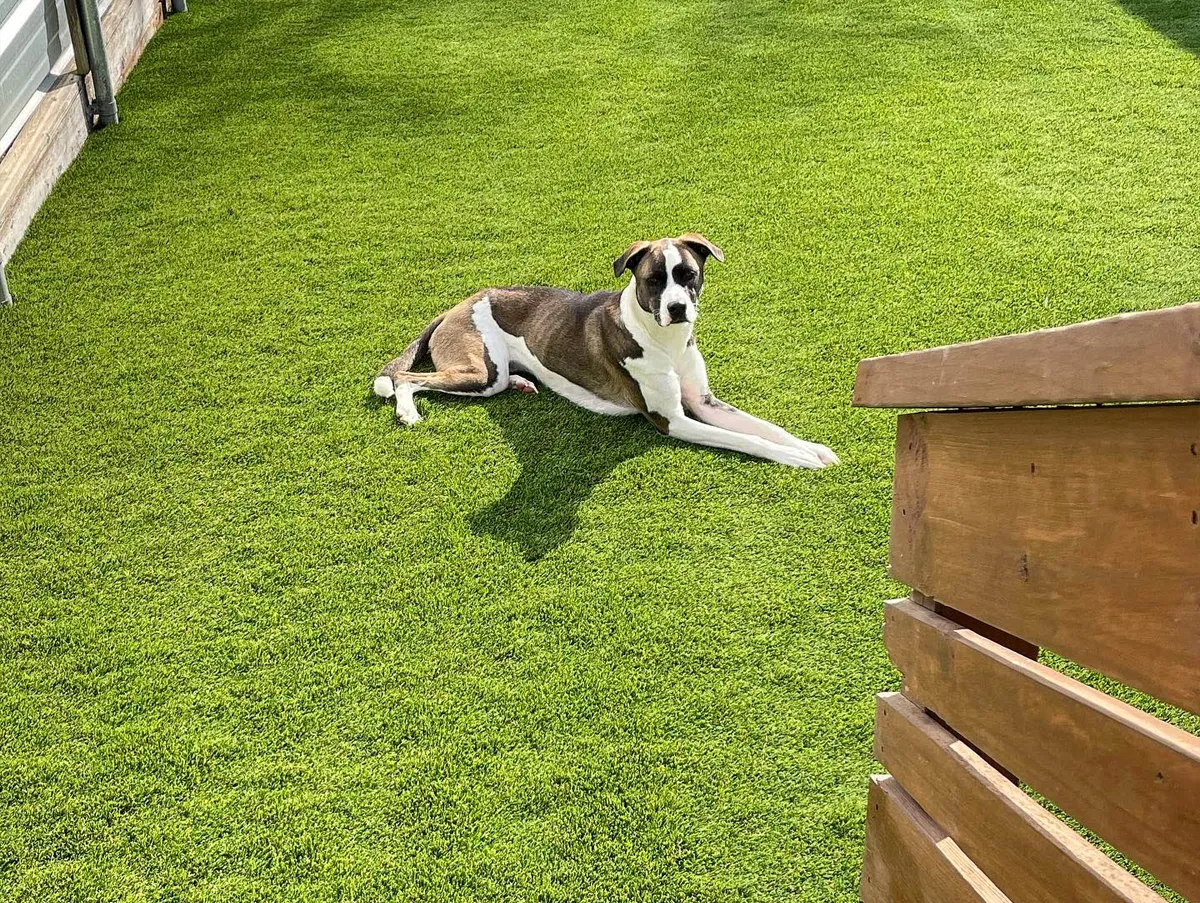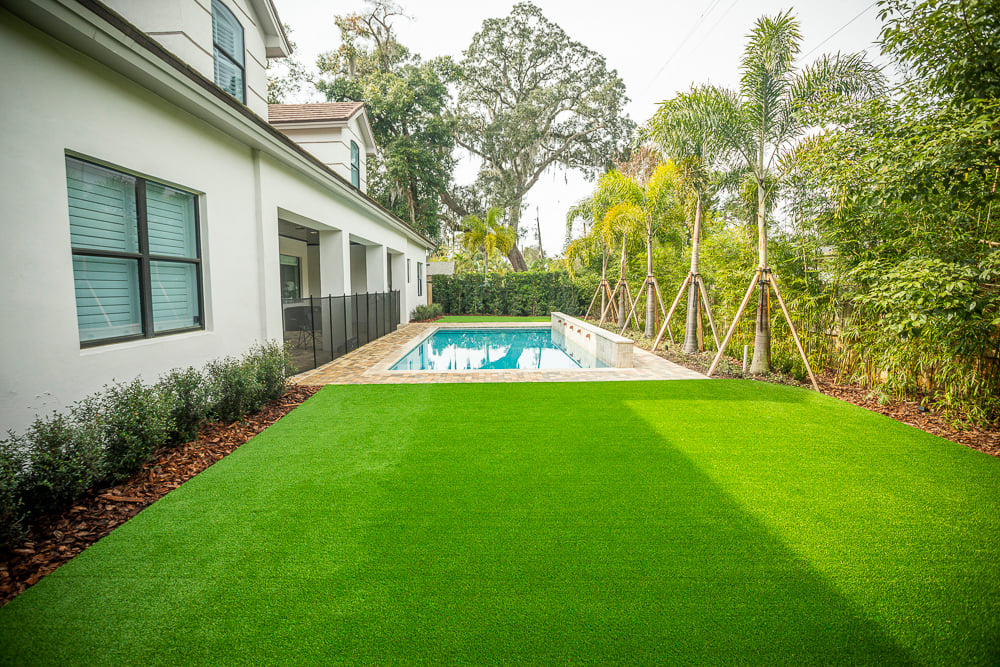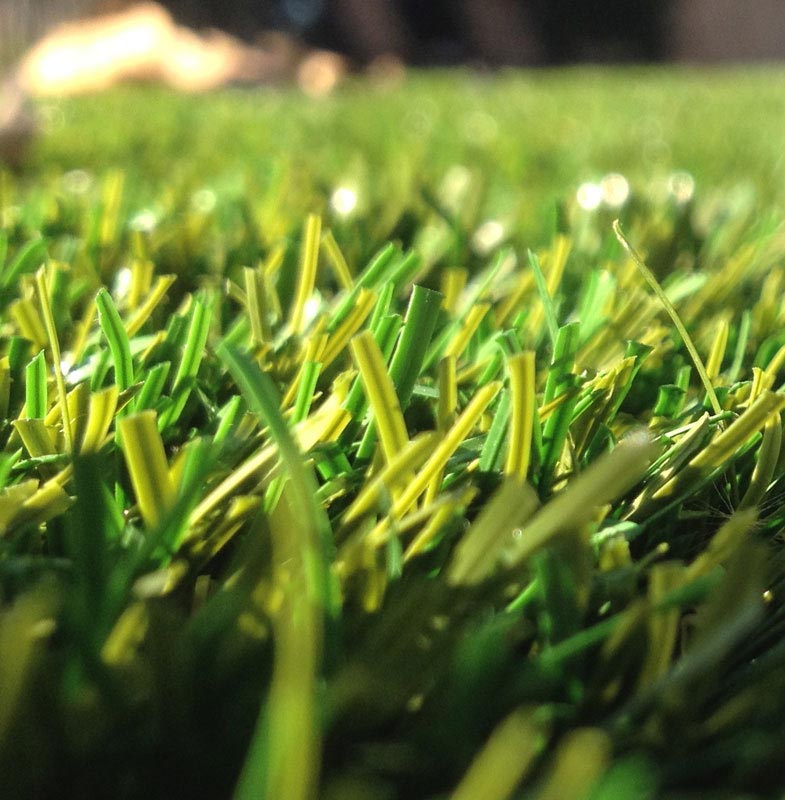Professional Arizona Turf Installation Solutions for Home and Commercial Use
Professional Arizona Turf Installation Solutions for Home and Commercial Use
Blog Article
Delve Into the Environmental Advantages of Opting for Artificial Grass Solutions
The fostering of artificial turf options offers a compelling chance to deal with pressing ecological obstacles. By significantly minimizing water use and decreasing the application of harmful chemicals, these alternatives not just promote lasting landscaping however also protect local ecological communities.
Water Conservation Conveniences
One of the most significant benefits of artificial turf is its ability to conserve water. In contrast, fabricated turf does not need watering, considerably lowering the total need for water sources.
By removing the demand for routine watering, synthetic grass adds to sustainable landscape methods and assists reduce the ecological impact of extreme water usage. The preservation of water expands to the reduction of overflow, which can lead to dirt disintegration and waterway pollution.
Furthermore, the setup of man-made lawn permits house owners and communities to assign water sources a lot more successfully, concentrating on important usages such as alcohol consumption water and agriculture. The change in the direction of man-made turf not only advertises responsible water use but likewise lines up with wider ecological goals focused on maintaining natural resources.
As areas progressively prioritize sustainability, the water preservation advantages of synthetic grass offer an engaging case for its fostering in domestic and business landscaping jobs.
Decreased Chemical Use
The transition to fabricated lawn substantially lowers the dependence on chemical treatments commonly made use of in all-natural grass maintenance. Traditional lawn management usually entails the application of herbicides, plant foods, and chemicals to advertise growth and control pests. These chemicals can present risks to human health and wellness, neighborhood wildlife, and the environment, adding to dirt and water contamination.
In contrast, man-made grass gets rid of the demand for these unsafe compounds. By decreasing the release of artificial substances right into the environment, fabricated lawn advertises healthier soil and water systems.
Moreover, the absence of chemical overflow connected with synthetic turf installations helps protect neighborhood rivers from contamination, sustaining water life and keeping biodiversity. Arizona turf. As communities significantly focus on sustainable methods, going with man-made turf provides a sensible remedy that straightens with environmental conservation goals. With this change, homeowner can take pleasure in rich green rooms without compromising ecological health, leading the method for a more sustainable future
Reduced Carbon Impact

Moreover, the installation of synthetic grass can cause substantial water conservation. Natural yards need considerable quantities of water for watering, which not just adds to the carbon footprint linked with water removal and treatment yet likewise strains regional water sources. In contrast, synthetic grass needs minimal maintenance, calling for no watering, thereby significantly minimizing water use and its connected power prices.
Furthermore, the longevity of synthetic grass adds to its reduced carbon influence. With a life expectancy of up to 15 years or even more, the requirement for frequent replacements is reduced, leading to less waste and reduced energy intake in production and taking care of traditional grass choices. Overall, artificial turf offers a sustainable option for ecologically aware landscaping.
Environment Conservation
Habitat conservation is a vital factor to consider in the argument over landscape design options, particularly when contrasting fabricated lawn to all-natural yard. Natural yard yards frequently require extensive maintenance, including making use of herbicides, fertilizers, and pesticides, which can negatively impact neighborhood ecological communities. These chemicals can seep into the soil and rivers, harming indigenous plants and fauna and interfering with local habitats.
On the other hand, artificial grass presents a possibility to minimize the environmental impact of landscaping. moved here By deciding for artificial grass, house owners can minimize the disruption of all-natural habitats related to conventional lawn care techniques. Synthetic grass removes the need for dangerous chemicals, thus safeguarding nearby wildlife and preserving the stability of surrounding communities. In addition, the installment of synthetic grass can cause the conversion of former lawn areas into even more biodiverse landscapes, such as pollinator gardens or indigenous plant locations, which can sustain regional wildlife.
Inevitably, the change to synthetic turf not only preserves water and minimizes maintenance initiatives yet also fosters an extra harmonious relationship in between human tasks and the native environment, advertising environment conservation at the same time.
Long-Term Sustainability
Lasting sustainability is a crucial consider examining the advantages of synthetic grass over standard lawn yards. Among the most substantial advantages of synthetic grass is its longevity; useful site it can last as much as 15-20 years with very little maintenance, whereas all-natural lawn calls for regular reseeding and replacement. This long life minimizes the need for constant resources, such as water, plant foods, and pesticides, which are necessary for keeping a healthy grass lawn.
Additionally, synthetic lawn adds to a decrease in carbon exhausts connected with grass care tools. Conventional lawns usually need gas-powered mowers, leaners, and blowers, every one of which add to air contamination. Phoenix turf companies. On the other hand, fabricated grass gets rid of the requirement for such equipment, advertising a cleaner atmosphere
Additionally, the production of fabricated click for source lawn significantly makes use of recycled materials, boosting its sustainability profile. As suppliers embrace green techniques, the ecological footprint of synthetic grass remains to lessen.

Verdict
The adoption of synthetic turf solutions presents substantial environmental benefits, consisting of significant water conservation, minimized dependence on harmful chemicals, and a lower carbon impact. Furthermore, artificial lawn help in protecting all-natural habitats by decreasing land disruption and advertising lasting sustainability with making use of resilient products. Collectively, these aspects emphasize the possibility of fabricated turf to contribute positively to ecological wellness and offer a practical alternative to conventional landscaping techniques in a significantly resource-conscious globe.
In comparison, artificial lawn does not require watering, considerably lowering the total demand for water resources. By minimizing the launch of synthetic substances right into the ecosystem, artificial grass promotes healthier dirt and water systems.
Furthermore, the installation of man-made turf can result in substantial water conservation. In comparison, artificial turf requires marginal upkeep, calling for no watering, therefore considerably lowering water use and its linked energy prices.

Report this page